Blog
Jewellok is a professional pressure regulator and valve manufacturer and supplier.
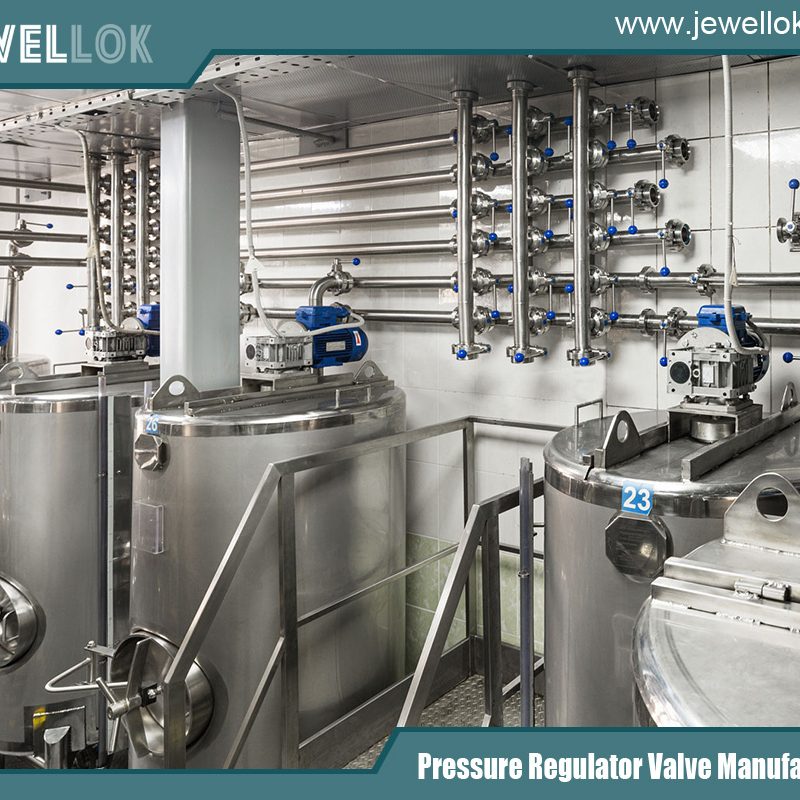
Stainless Steel Diaphragm Valve: A Comprehensive Guide to Its Design, Applications, and Advantages
- Pressure Regulator Valve Manufacturer
- 3000psi High Pressure Stainless Steel Diaphragm Valve, 316l stainless steel diaphragm valve, 316l stainless steel diaphragm valve Thailand, Air Compressor Check Valve, Back Pressure Regulating Valve, best stainless steel diaphragm valve manufacturer, Best stainless steel diaphragm valve suppliers, Brass Pressure Regulator, Changeover Manifold, china high pressure air regulator valve manufacturer, Double Block and Bleed valve manufacturers, europe stainless steel diaphragm valve, europe stainless steel diaphragm valve factory, europe stainless steel diaphragm valve manufacturer, europe stainless steel diaphragm valve supplier, Flexible Hose Tubing, Gas Flow Meter, Gas Pressure Test Gauge, gas regulator valve manufacturers, Gas Solenoid Valve, high pressure ball valve manufacturer, high purity valves manufacturers, industrial diaphragm valve manufacturers, italy stainless steel diaphragm valve, italy stainless steel diaphragm valve factory, italy stainless steel diaphragm valve manufacturer, italy stainless steel diaphragm valve supplier, low pressure valve manufacturer, medical oxygen pressure gauge manufacturer, Medical Oxygen Regulator, needle valve 10000 psi manufacturer, pneumatic actuated ball valve manufacturer, Pneumatic Pressure Control Valve, pressure reducing valve manufacturers, pressure relief valve manufacturers, ss diaphragm valve manufacturers, Stainless Steel Ball Valve, Stainless Steel Diaphragm Valve, Stainless steel diaphragm valve china, stainless steel diaphragm valve factory, Stainless Steel Diaphragm Valve Gujarat, Stainless Steel Diaphragm Valve India, Stainless Steel Diaphragm Valve Manufacturer, stainless steel diaphragm valve supplier, Stainless Steel Needle Valve, Stainless Steel Pressure Regulator, Stainless Steel Tube Fittings, Water Solenoid Valve
- No Comments
Stainless Steel Diaphragm Valve: A Comprehensive Guide to Its Design, Applications, and Advantages
In the realm of industrial fluid control, valves serve as the “gatekeepers” of fluid flow, ensuring precision, safety, and efficiency across sectors. Among the diverse range of valves available, the stainless steel diaphragm valve stands out for its unique combination of corrosion resistance, sanitary performance, and reliable sealing—making it indispensable in industries where fluid purity, contamination prevention, and durability are non-negotiable. From pharmaceutical manufacturing to semiconductor production, and from food processing to wastewater treatment, this valve type has become a cornerstone of modern fluid handling systems. This article explores the core characteristics, working principles, applications, and best practices for stainless steel diaphragm valves, providing a holistic understanding of their role in industrial operations.

1. What Is a Stainless Steel Diaphragm Valve?
A stainless steel diaphragm valve is a type of linear motion valve designed to control, regulate, or shut off fluid flow using a flexible diaphragm as the primary sealing and actuating component. Unlike traditional valves (e.g., gate valves, globe valves) where fluid comes into contact with internal mechanical parts (e.g., valve stems, packing glands), the diaphragm in this valve acts as a physical barrier. It isolates the fluid chamber (formed by the stainless steelvalve, or valve body) from the valve’s external actuating mechanism (e.g., handwheel, pneumatic cylinder, electric motor).
The defining feature of this valve is its stainless steel construction—typically using grades like 304 or 316L stainless steel for thevalve. This material choice ensures exceptional resistance to corrosion, rust, and chemical degradation, while the diaphragm (made from elastomers or fluoropolymers) provides a tight, leak-proof seal. Together, these components make the valve suitable for both aggressive and sanitary fluid environments.
2. Structural Components and Material Selection
A stainless steel diaphragm valve comprises five key components, each engineered to meet specific performance requirements. The choice of materials for each part directly impacts the valve’s durability, compatibility, and application range.
2.1 Core Components
Valve Body: The main housing that contains the fluid flow path. It is typically forged or cast from stainless steel, with internal surfaces polished to minimize fluid turbulence and prevent residue buildup (critical for sanitary industries).
Diaphragm: The “heart” of the valve, responsible for sealing and controlling flow. It is a flexible, elastic membrane that deforms under pressure to open or close the valve.
Valve Cover (Bonnet): Secures the diaphragm in place and houses the actuating mechanism. It is also made of stainless steel to maintain corrosion resistance and structural integrity.
Actuating Mechanism: Converts external force into linear motion to deform the diaphragm. Common types include manual (handwheel), pneumatic (compressed air-driven cylinder), and electric (motor-driven stem).
Valve Seat: A replaceable component inside thevalve that forms a tight seal with the diaphragm. It is often made of stainless steel or a wear-resistant polymer (e.g., PTFE) for enhanced durability.
2.2 Material Choices for Key Parts
Stainless Steel Grades for valve:
304 Stainless Steel: Cost-effective, with good resistance to mild acids, alkalis, and atmospheric corrosion. Ideal for food processing, general water treatment, and non-aggressive fluid applications.
316L Stainless Steel: Contains molybdenum, which boosts resistance to chloride-induced corrosion (e.g., seawater, brines) and strong acids (e.g., sulfuric acid). Preferred for pharmaceutical, semiconductor, and chemical industries.
Diaphragm Materials:
EPDM (Ethylene Propylene Diene Monomer): Excellent resistance to ozone, water, and mild chemicals; cost-efficient. Suitable for food, beverage, and general water systems (operating temperature: -40°C to 120°C).
PTFE (Polytetrafluoroethylene): Chemically inert (resists nearly all acids, alkalis, and solvents) and high-temperature resistance (up to 260°C). Used in aggressive chemical processing and semiconductor manufacturing.
FKM (Fluorocarbon Rubber): High-temperature resistance (up to 200°C) and good chemical resistance. Ideal for oil and gas, and high-temperature fluid applications.
3. Working Principle of Stainless Steel Diaphragm Valves
The operation of a stainless steel diaphragm valve relies on the elastic deformation of the diaphragm, which modulates the flow path between the valve’s inlet and outlet. The process varies slightly by actuation type but follows a universal core logic:
3.1 Manual Actuation (Handwheel)
Closing the Valve: When the handwheel is rotated clockwise, it drives a threaded stem downward. The stem presses against the center of the diaphragm, forcing it to deform and press tightly against the valve seat. This blocks the flow path, shutting off fluid flow.
Opening the Valve: Rotating the handwheel counterclockwise lifts the stem, relieving pressure on the diaphragm. The diaphragm’s elasticity allows it to return to its original shape, creating a gap between the diaphragm and valve seat. Fluid then flows through the valve.
3.2 Pneumatic/Electric Actuation
For automated systems, pneumatic or electric actuators replace the handwheel:
Pneumatic: Compressed air is supplied to a cylinder, which pushes the stem downward (closing the valve) or pulls it upward (opening the valve) based on air pressure signals.
Electric: An electric motor drives a gear mechanism to move the stem linearly. This type offers precise control over flow rate and is ideal for remote or computer-integrated systems.
A key advantage of this design is complete fluid isolation: The diaphragm ensures no contact between the fluid and the valve’s actuating parts (stem, cylinder, motor). This prevents fluid contamination (critical for food/medicine) and protects the actuator from corrosion (vital for aggressive chemicals).
4. Core Advantages of Stainless Steel Diaphragm Valves
Compared to other valve types (e.g., ball valves, globe valves), stainless steel diaphragm valves offer unique benefits that make them preferred for high-demand applications:
4.1 Superior Corrosion Resistance
The stainless steelvalve (304 or 316L) and chemically resistant diaphragms (PTFE, FKM) withstand harsh environments, including exposure to acids, alkalis, salts, and humid conditions. This extends the valve’s lifespan and reduces maintenance costs.
4.2 Sanitary and Contamination-Free Operation
The smooth, polished internal surfaces of the stainless steelvalve (with no crevices or dead zones) and the diaphragm’s isolation function prevent fluid residue buildup and cross-contamination. This meets strict industry standards such as GMP (Good Manufacturing Practice) for pharmaceuticals and FDA (Food and Drug Administration) for food/beverages.
4.3 Leak-Proof Sealing
The diaphragm forms a tight, positive seal against the valve seat, eliminating external leaks (which risk environmental damage) and internal leaks (which compromise flow control). This is critical for handling toxic, flammable, or high-value fluids.
4.4 Easy Maintenance
Unlike valves with complex internal parts (e.g., gate valves with packing glands), diaphragm valves require minimal maintenance. The diaphragm is a replaceable component that can be swapped out without disassembling the entire valve—saving time and reducing downtime.
4.5 Versatile Flow Control
Diaphragm valves offer linear flow characteristics, meaning flow rate is proportional to the diaphragm’s displacement. This allows precise regulation of flow (e.g., in chemical dosing or pharmaceutical blending) as well as on/off shutoff.
5. Key Application Fields
The unique properties of stainless steel diaphragm valves make them indispensable across multiple industries. Below are their most common uses:
5.1 Pharmaceutical and Biotech
In pharmaceutical manufacturing (e.g., injectables, vaccines) and biotech (e.g., cell culture, protein purification), hygiene and sterility are paramount. Stainless steel (316L) diaphragm valves with PTFE or EPDM diaphragms meet GMP standards, as their smooth surfaces are easy to sterilize (via steam-in-place, or SIP) and prevent microbial growth. They are used to control the flow of purified water,potion, and sterile gases.
5.2 Food and Beverage
From dairy (milk, yogurt) to juice, beer, and processed foods, stainless steel diaphragm valves prevent contamination and ensure product safety. The 304 stainless steelvalve and EPDM diaphragms (FDA-approved) are non-toxic and resistant to cleaning agents (e.g., caustic soda). They are often used in filling lines, CIP (clean-in-place) systems, and ingredient dosing.
5.3 Chemical Processing
Chemical plants handle aggressive fluids such as sulfuric acid, hydrochloric acid, and solvents. Stainless steel (316L)valve paired with PTFE diaphragms resist chemical attack, while the diaphragm’s isolation function protects actuators from corrosion. These valves control the flow of raw materials, intermediates, and waste streams.
5.4 Semiconductor Manufacturing
Semiconductor production requires ultra-pure water (UPW) and specialty gases (e.g., nitrogen, argon) with near-zero contamination. High-purity stainless steel (316L electropolished) diaphragm valves with PTFE diaphragms minimize particle shedding and ensure fluid purity—critical for preventing defects in microchips.
5.5 Water and Wastewater Treatment
In municipal wastewater treatment or industrial water purification, stainless steel diaphragm valves resist corrosion from chlorinated water, sewage, and industrial effluents. They are used in filtration systems, chemical dosing (e.g., adding chlorine for disinfection), and sludge handling.
5.6 Energy and Power
In power plants (e.g., nuclear, thermal) and oil/gas facilities, stainless steel diaphragm valves control auxiliary fluids such as cooling water, lubricants, and chemical additives. High-temperature FKM diaphragms and 316Lvalve withstand harsh operating conditions, ensuring reliable performance.
6. Selection Guide for Stainless Steel Diaphragm Valves
Choosing the right stainless steel diaphragm valve requires considering application-specific factors to ensure optimal performance and longevity. Below are key criteria to evaluate:
6.1 Fluid Properties
Chemical Compatibility: Match thevalve and diaphragm materials to the fluid. For example, use 316L + PTFE for strong acids; 304 + EPDM for mild chemicals or water.
Fluid Temperature: Ensure the diaphragm material can withstand the operating temperature (e.g., FKM for >120°C; PTFE for >150°C).
Fluid Viscosity/Solids Content: For viscous fluids (e.g., syrups) or fluids with small particles (e.g., sludge), choose a valve with a larger flow path and a durable diaphragm (e.g., FKM) to avoid clogging or wear.
6.2 Operating Conditions
Pressure: Select a valve with a maximum working pressure (MWP) higher than the system pressure. Most industrial diaphragm valves handle pressures up to 10 bar, but high-pressure models (up to 40 bar) are available for specialized applications.
Automation Needs: Use manual valves for simple on/off tasks; pneumatic/electric valves for automated systems (e.g., production lines requiring remote control or integration with PLCs).
6.3 Industry Standards
Sanitary Industries (Pharma/Food): Choose valves with GMP/FDA certification, electropolished internal surfaces (Ra ≤ 0.4 μm), and CIP/SIP compatibility.
Chemical/Semiconductor Industries: Opt for valves with ISO 9001 certification, high-purity materials (e.g., 316L electropolished), and leak-tightness testing (e.g., ISO 5208).
6.4 Connection Type
Select a connection that matches the pipeline:
Flanged: For large-diameter pipelines (≥ DN50) or high-pressure systems.
Threaded: For small-diameter pipelines (≤ DN40) and low-pressure applications.
Clamped (Tri-Clamp): Common in sanitary industries (pharma/food) for quick, easy disassembly and cleaning.
7. Installation and Maintenance Best Practices
Proper installation and maintenance are critical to maximizing the lifespan and performance of stainless steel diaphragm valves.
7.1 Installation Tips
Inspect Before Installation: Check for damage to thevalve, diaphragm, or valve seat. Ensure the valve is clean (especially for sanitary applications) and compatible with the fluid/pipeline.
Follow Flow Direction: Most diaphragm valves have a marked flow direction (indicated by an arrow on thevalve). Installing the valve in reverse can cause poor sealing or diaphragm damage.
Avoid Over-Tightening: When connecting flanged or threaded valves, use a torque wrench to avoid over-tightening, which can deform thevalve or damage the diaphragm.
Sanitize for Hygienic Applications: For pharma/food use, sterilize the valve via SIP or chemical cleaning before installation to eliminate contaminants.
7.2 Maintenance Guidelines
Regular Leak Checks: Inspect the valve for external leaks (around the bonnet or connections) and internal leaks (via flow meter or pressure gauge) monthly.
Diaphragm Replacement: Replace the diaphragm every 6–12 months (or as needed) if signs of wear, cracking, or hardening are visible. Use only manufacturer-approved diaphragms to ensure compatibility.
Lubrication: For manual or electric valves, lubricate the stem threads and actuating gears quarterly with food-grade lubricant (for sanitary applications) or industrial lubricant (for chemical use).
Cleaning: For sanitary valves, perform CIP regularly to remove residue. Avoid using abrasive cleaners that can scratch thevalve’s polished surface.
8. Market Trends and Technological Innovations
The global stainless steel diaphragm valve market is growing steadily, driven by increasing demand from sanitary industries (pharma, food) and technological advancements. Key trends include:
8.1 Material Innovation
High-Performance Diaphragms: New materials like perfluoroelastomers (FFKM) offer even higher temperature resistance (up to 320°C) and chemical inertness, expanding the valve’s use in extreme environments (e.g., aerospace, high-temperature chemical processing).
Advanced Stainless Steels: Duplex stainless steels (e.g., 2205) combine high strength and corrosion resistance, making them suitable for offshore oil/gas and desalination plants.
8.2 Smart Valve Technology
Manufacturers are integrating sensors (pressure, temperature, flow) and IoT connectivity into diaphragm valves. These “smart valves” can monitor performance in real time, detect leaks or diaphragm wear, and send alerts to operators—enabling predictive maintenance and reducing downtime. For example, in semiconductor plants, smart valves track particle levels in UPW to prevent chip defects.
8.3 Miniaturization
For compact systems (e.g., lab-on-a-chip devices, medical equipment), miniaturized stainless steel diaphragm valves (with diameters as small as DN2) are being developed. These valves offer precise flow control in limited space while maintaining sanitary and corrosion-resistant properties.
8.4 Sustainability
With a focus on environmental responsibility, manufacturers are using recyclable stainless steel and developing diaphragms that are easier to recycle. Additionally, leak-proof designs reduce fluid waste, aligning with global sustainability goals.

9. Conclusion
The stainless steel diaphragm valve is a versatile, reliable, and essential component in modern industrial fluid control. Its unique combination of corrosion resistance, sanitary performance, and leak-proof sealing makes it irreplaceable in industries where precision, safety, and purity are critical—from pharmaceuticals to semiconductors, and from food processing to chemical manufacturing.
As technology advances, innovations in materials (e.g., FFKM diaphragms), smart monitoring, and miniaturization will further expand the valve’s capabilities, enabling it to meet the evolving needs of industries worldwide. By selecting the right valve based on fluid properties, operating conditions, and industry standards, and following best practices for installation and maintenance, businesses can ensure efficient, long-lasting fluid control systems.
In short, the stainless steel diaphragm valve is more than just a valve—it is a cornerstone of safe, clean, and efficient industrial operations.
For more about stainless steel diaphragm valve: a comprehensive guide to its design, applications, and advantages, you can pay a visit to Jewellok at https://www.jewellok.com/ for more info.
Recent Posts
Which Gas Pressure Regulator is Best for Laboratory Use?
Complete Guide to Choosing the Best High Pressure Nitrogen Gas Regulator
Tags
Recommended Products
-
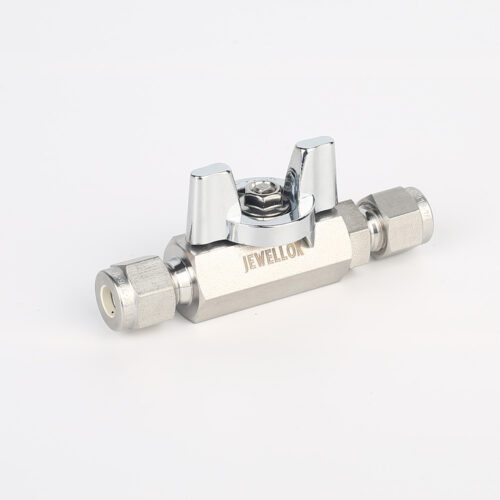
Stainless Steel High-Purity High Temperature Metal Seated Ball Valves JBV3 Series
-
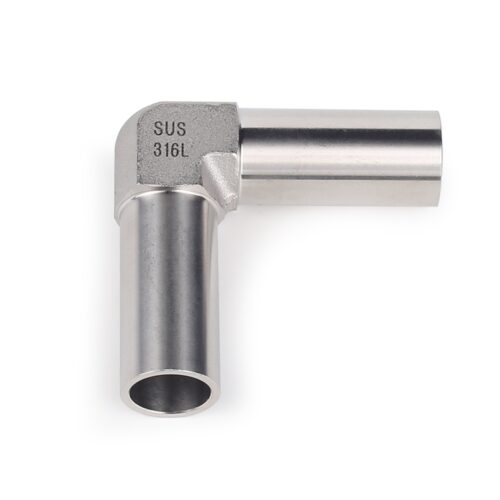
High Purity Stainless Steel Mini Tube Butt Weld Fittings For Semiconductor
-
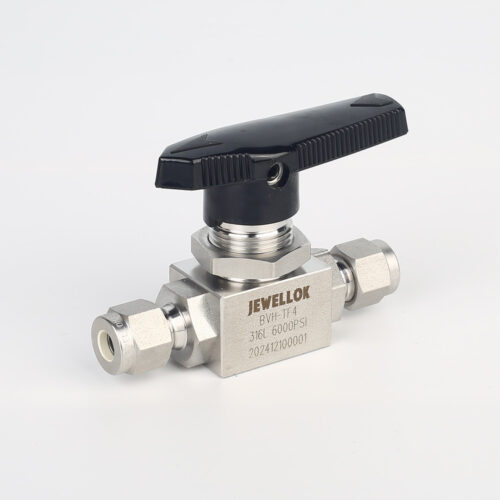
High Purity High Pressure 316 Stainless Steel Ball Valves JBV1 Series From High Pressure Ball Valve Manufacturer And Supplier In China
-
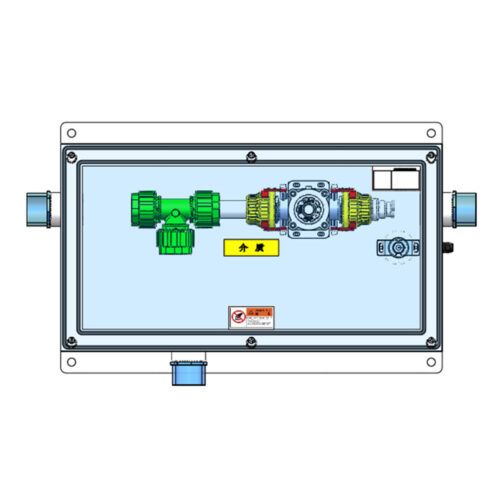
T-BOX JW-TB-C Special Gas Delivery System Gas Valve Manifold Boxes
-
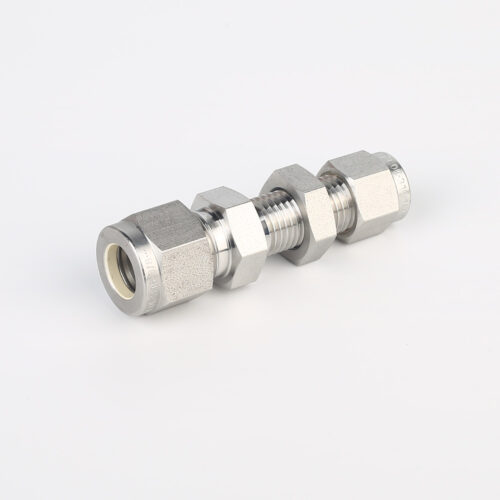
775L Bulkhead Reducing Union | Stainless Steel High Purity Double Ferrule Bulkhead Reducing Unions
-
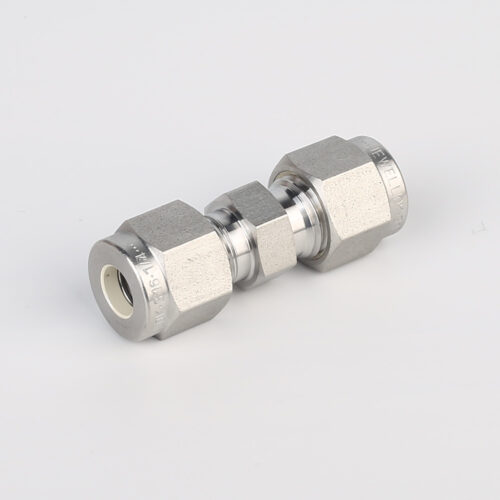
762L Stainless Steel High Purity Union High-Purity Gas System Fittings
-
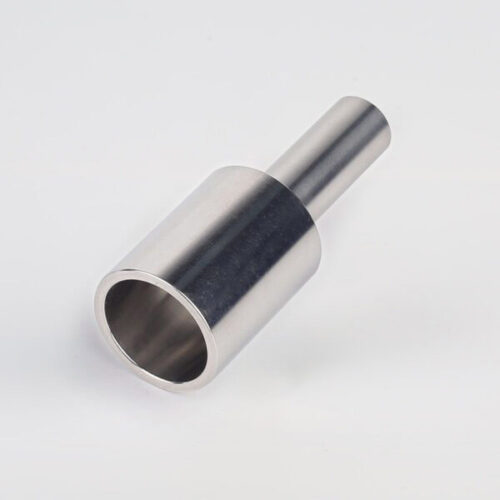
316L Stainless Steel Tube Butt Weld Reducing Fittings Union Reducer RW Series Ultrahigh Purity Process
-
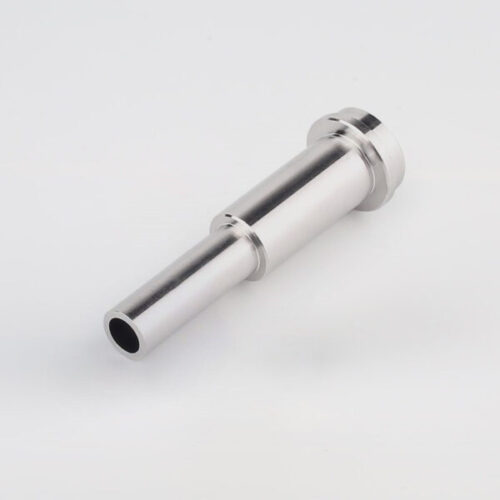
Long Gland LG Series For Ultra High Purity Gas And Chemical Delivery Systems